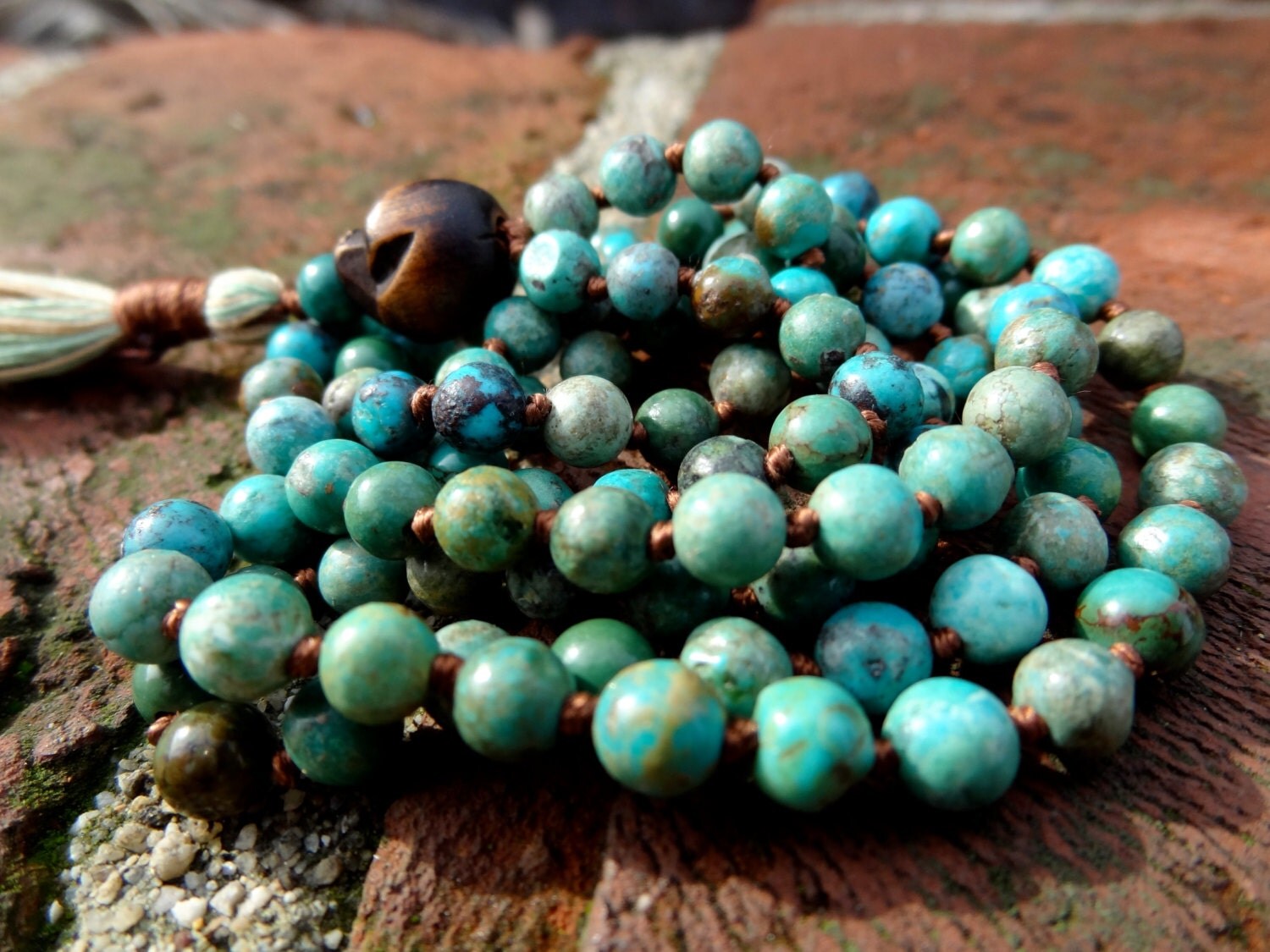Malas are a string of 108 beads, usually of a particular stone that offers unique qualities to the wearer. The malas can be used for meditation or prayer, as healing or protecting stones, or as accessories. Many yogis are drawn to malas because of their connection with the stone or use in cultivating positive energies.

How to use your malas:
Meditation. Find a word or phrase that resonates with you today. Maybe it’s something you need to hear or something you want to put out into the universe. Start with the bead next to the biggest one and repeat the mantra with each bead, all the way around. Some people say you should never let others see your malas used for meditation or prayer. Let it be a personal practice just for you!
Examples of mantras: • May all beings be happy and free.” • “I change my thoughts, I change my world.” • “I am”
Healing stones. The stones used for malas are selected carefully and usually with a specific intention related to the stones’ energy. Certain stones resonate differently, offering various healing and protecting benefits to the wearer.
Red coral: Correlates to the root chakra, protects your emotional foundation.
Turquoise: Correlates to the throat chakra, promotes communication past and present.
Jade: Signifies purity, tranquility, harmony with self and others.
Obsidian: Protection from negativity in thoughts, actions and energies.
Accessories. You don’t need to use malas for meditation or healing to wear them. Many people wear malas as a necklace or bracelet. Julie Rowan, creator of White Wash Creative malas, says the malas she wears are a symbol of her meaning of yoga. “It’s a constant reminder to myself: am I living my yoga?” Choosing your malas. Some people believe you shouldn’t choose your own malas, but others believe you need to choose your own to see what stones connect with you. Sometimes the stones you are initially attracted to are the ones that resonate the most with what you need.




